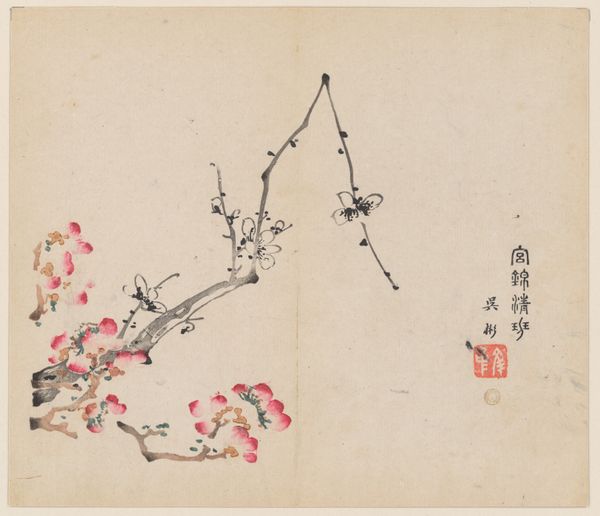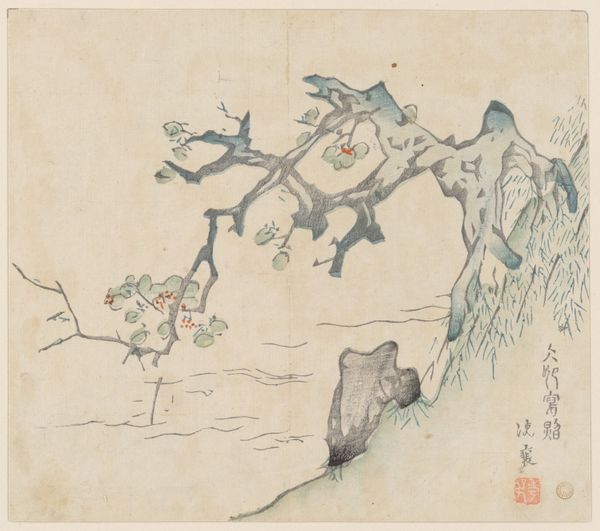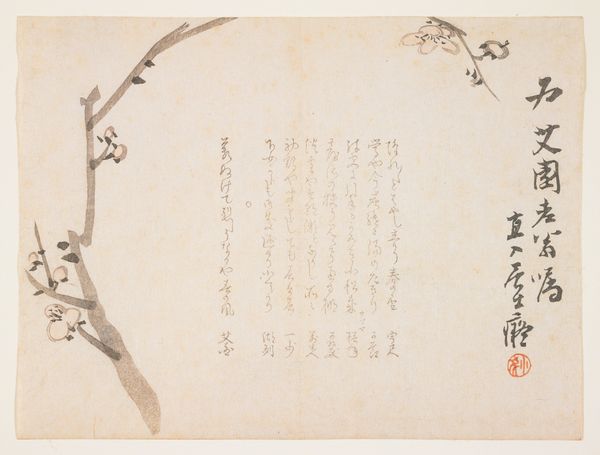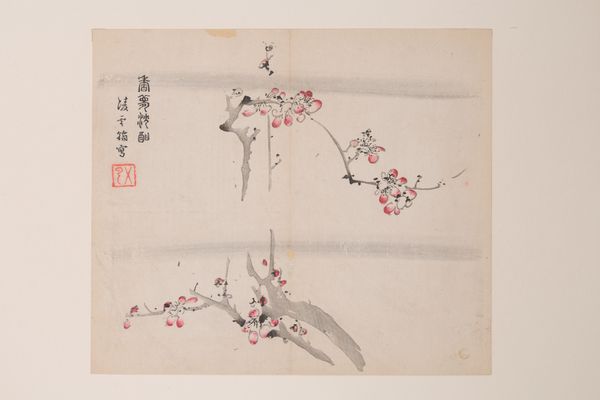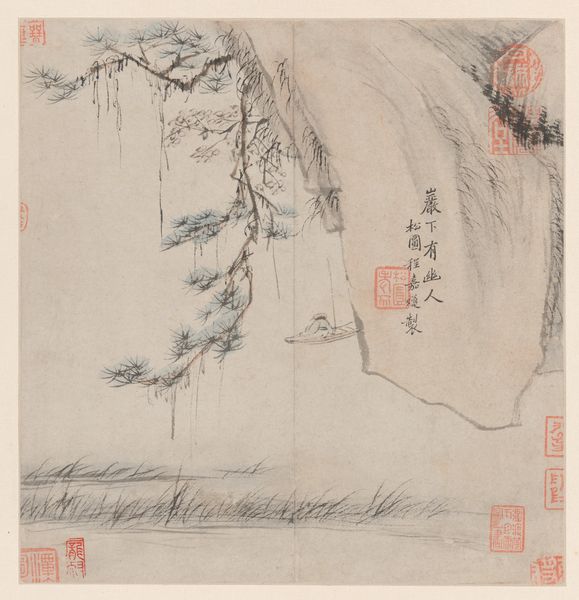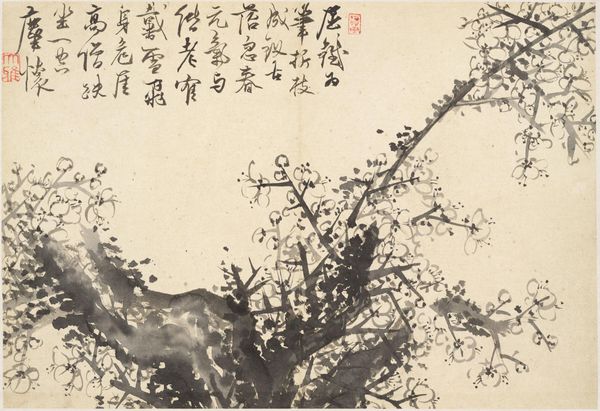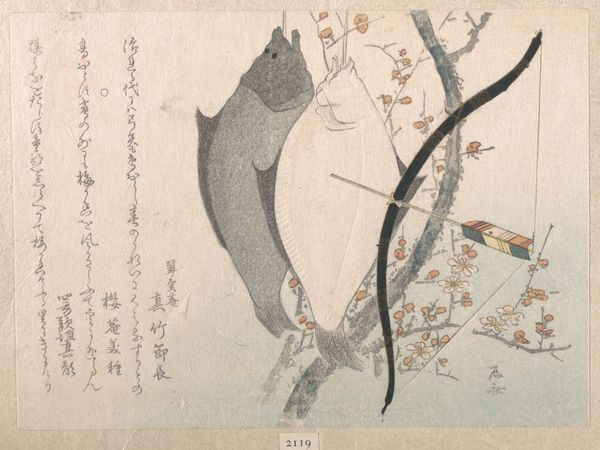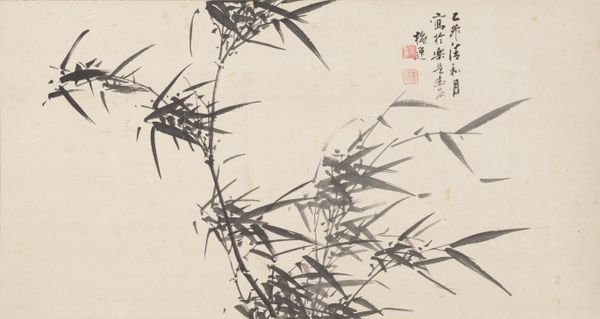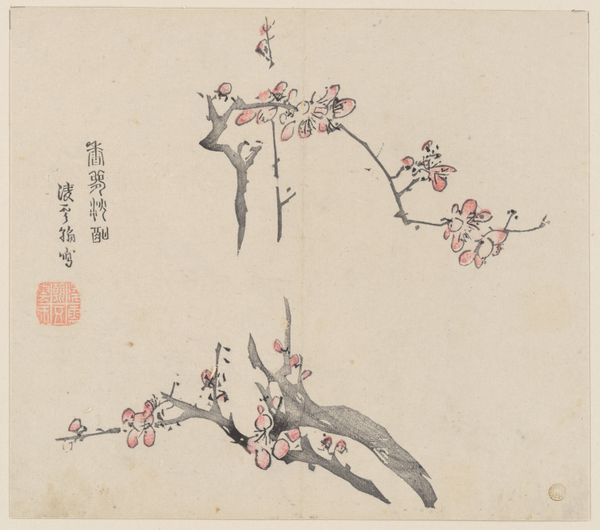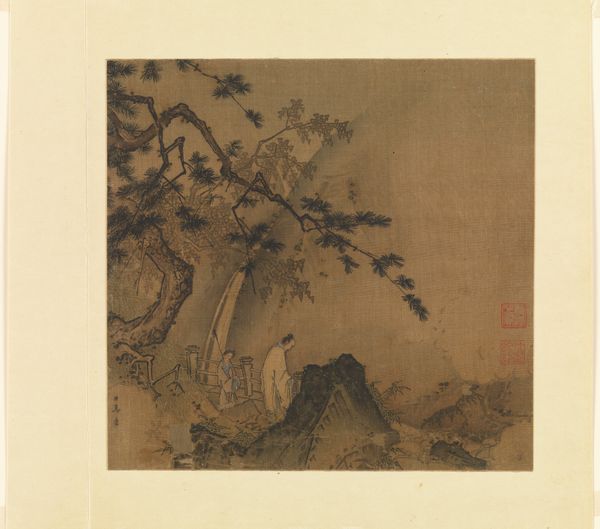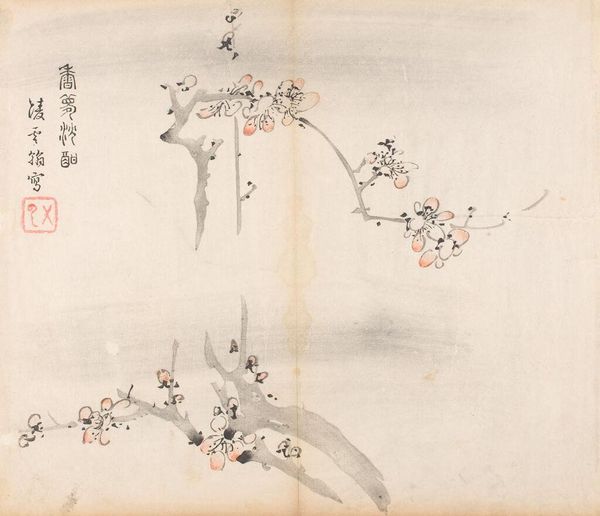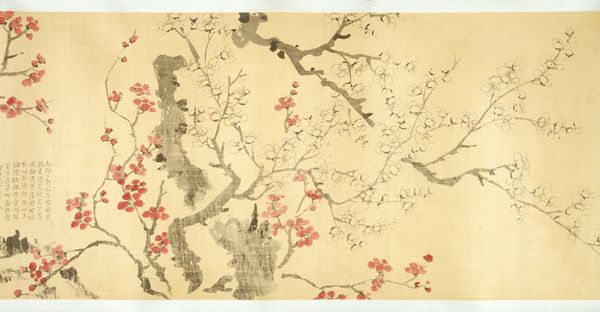
Page from the Ten Bamboo Studio Manual of Painting and Calligraphy 1633
0:00
0:00
print, ink, woodblock-print, woodcut
# print
#
pen sketch
#
asian-art
#
landscape
#
form
#
22_ming-dynasty-1368-1644
#
ink
#
woodblock-print
#
woodcut
#
china
#
line
Dimensions: 9 7/16 x 10 3/4 in. (24 x 27.3 cm)
Copyright: Public Domain
Editor: Here we have a page from *The Ten Bamboo Studio Manual of Painting and Calligraphy*, a woodblock print by Hu Zhengyan, created in 1633. I’m struck by the simplicity, the sparseness of the image. It feels very delicate. What strikes you when you look at it? Curator: I am most fascinated by the process itself. This wasn't simply drawn; it's a woodblock print. Consider the labor involved. Someone meticulously carved these delicate lines into a woodblock. How does this mass-produced art democratize access to artistic expression? Editor: So, you are saying that this process allowed for wider distribution and consumption? Curator: Precisely. In a society where art ownership was often exclusive, printmaking, specifically this woodblock technique, created a unique means of dispersing artwork, impacting traditional confines around 'high' art and challenging class distinctions. How might access to images shape perception and values? Editor: It is easy to get lost in its visual appeal. I hadn't considered the work that went into its production, nor how its creation could affect access to art. Curator: The manual itself was intended as an instructional tool for aspiring artists, blurring the lines between artistic creation, production, and education. Does knowing this shift your understanding? Editor: It definitely complicates my understanding. I had considered the page as a piece of art, separate from the manual itself, which itself has social value as a form of knowledge-transfer during its period. I am rethinking the ways its consumption democratized art. Curator: Exactly! Understanding the material conditions of art production—the labor, the technology, and the modes of distribution—offers a powerful lens through which to understand the social life of art itself.
Comments
No comments
Be the first to comment and join the conversation on the ultimate creative platform.
